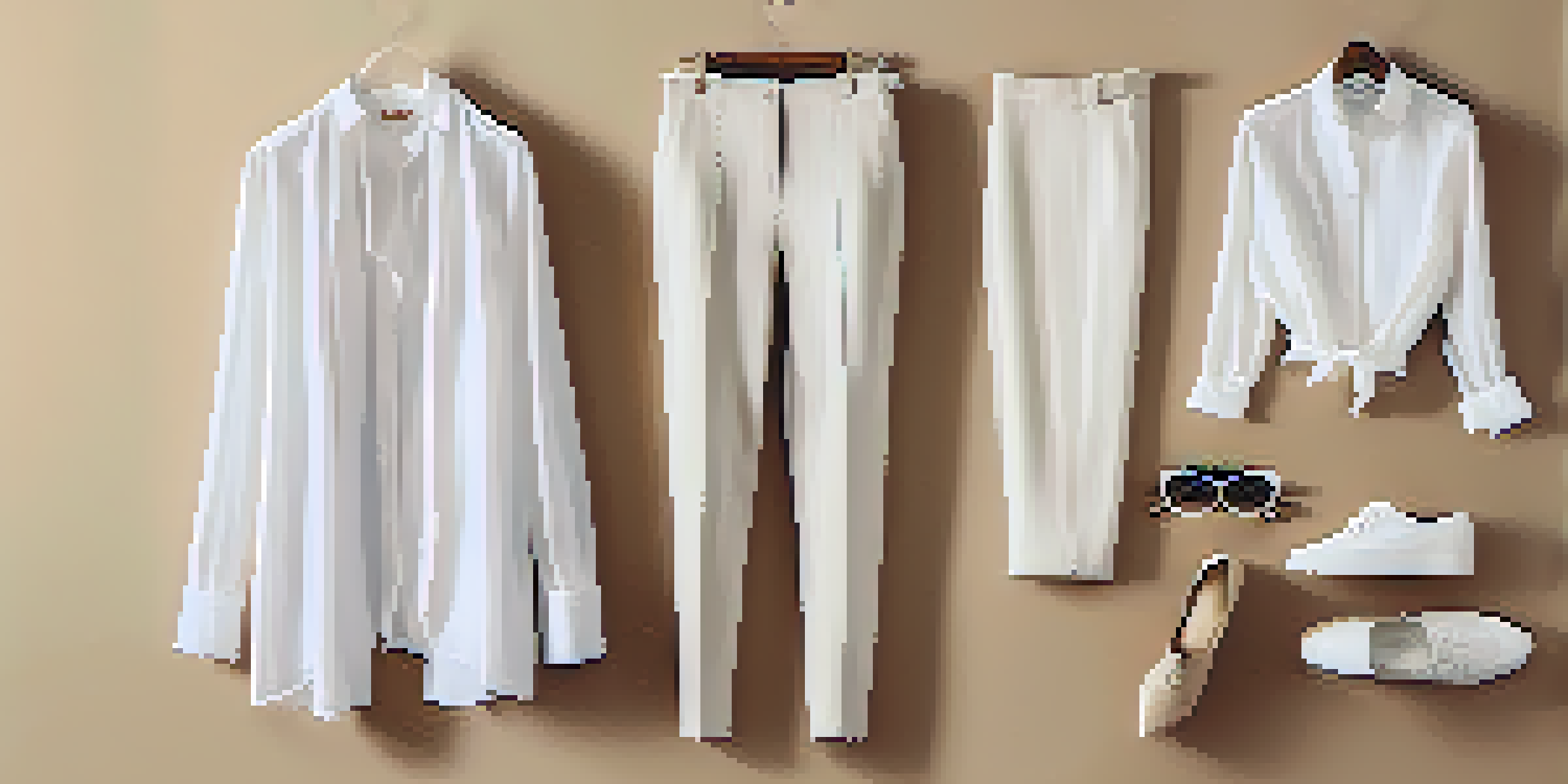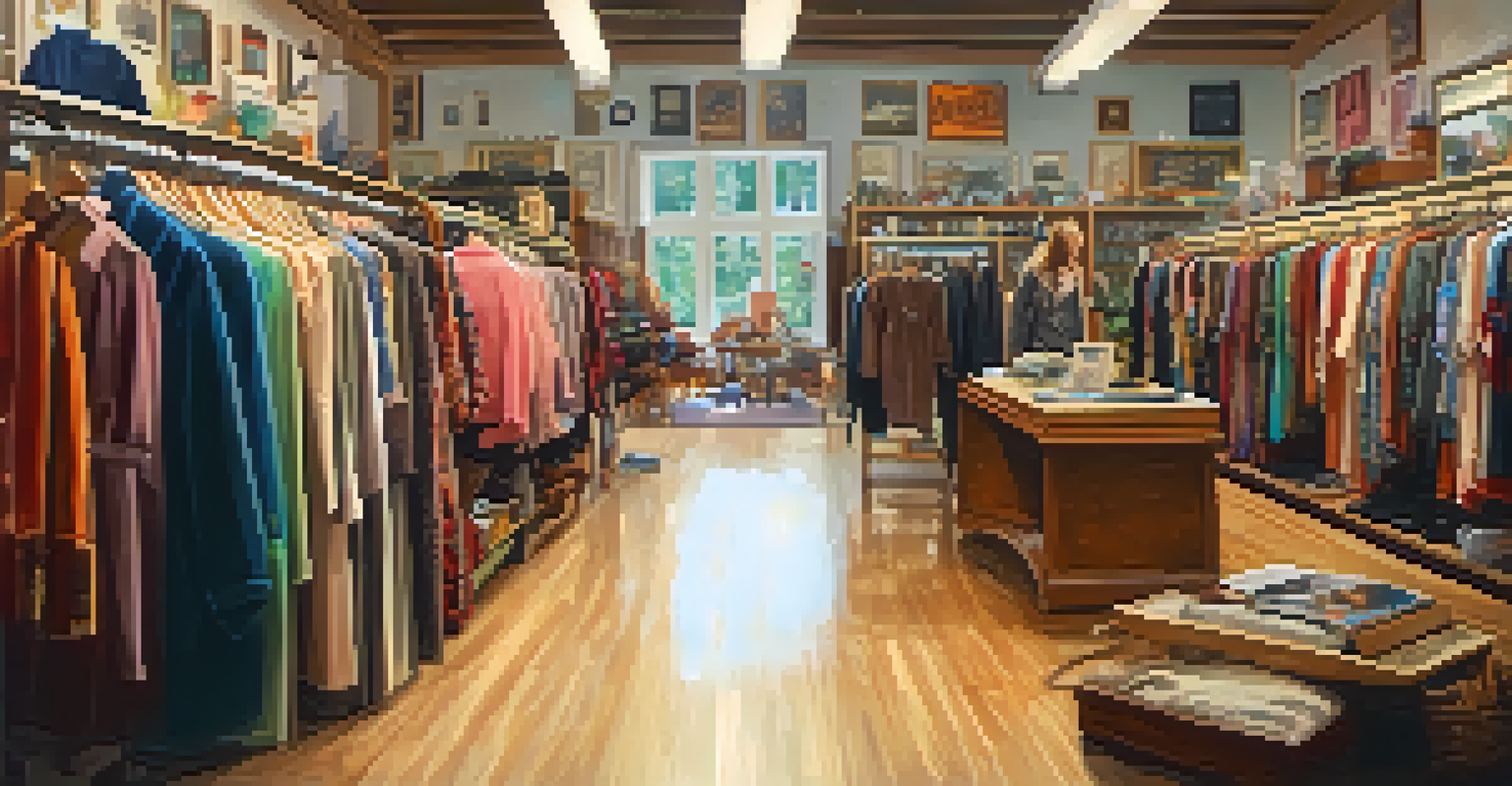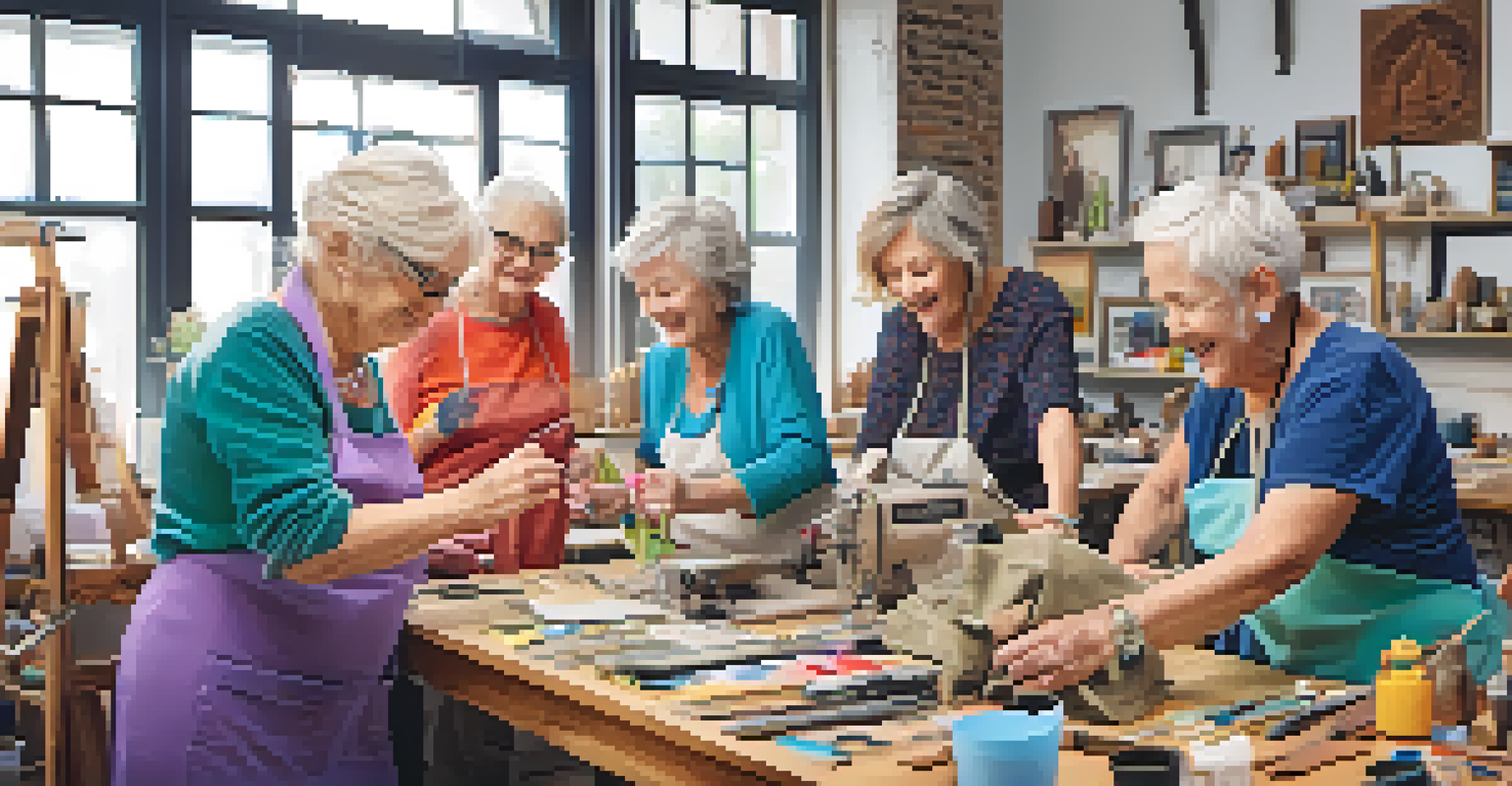Sustainable Fashion: Eco-Friendly Choices for Older Adults

Understanding Sustainable Fashion and Its Importance
Sustainable fashion refers to clothing that is designed, manufactured, and marketed in a way that reduces environmental impact. It's about more than just using organic materials; it's a commitment to ethical practices throughout the supply chain. For older adults, understanding this concept can empower them to make choices that not only benefit the planet but also resonate with their values.
Fashion is the armor to survive the reality of everyday life.
As we age, many of us become more conscious of the legacy we leave behind. Choosing sustainable fashion allows older adults to contribute to a healthier planet for future generations. It’s a way to express personal values through style, showing that fashion can be both beautiful and responsible.
Moreover, sustainable fashion often emphasizes quality over quantity, which aligns well with the preferences of many older adults. Investing in well-made, timeless pieces can be more fulfilling than constantly buying fast fashion, which tends to wear out quickly and contribute to waste.
Identifying Eco-Friendly Materials in Clothing
When shopping for sustainable fashion, it's essential to recognize eco-friendly materials. Fabrics like organic cotton, bamboo, and Tencel are great options, as they are produced with less environmental harm. Understanding these materials can help older adults make informed choices while shopping.

For instance, organic cotton is grown without harmful pesticides, making it safer for both the environment and the wearer's skin. Bamboo, on the other hand, grows rapidly and requires little water, making it a sustainable choice. By choosing clothing made from these materials, older adults can support eco-friendly practices without sacrificing comfort or style.
Embrace Eco-Friendly Fashion Choices
Sustainable fashion empowers older adults to make stylish choices that positively impact the environment.
Additionally, many brands now offer detailed information about their materials, making it easier to identify sustainable options. Older adults can also look for certifications like Global Organic Textile Standard (GOTS) or OEKO-TEX, which ensure that the fabrics are made sustainably and ethically.
Choosing Brands Committed to Sustainability
Not all brands are created equal when it comes to sustainability. Older adults should seek out brands that prioritize eco-friendly practices and transparency in their production processes. This can include everything from using sustainable materials to ensuring fair labor practices for workers.
The greatest threat to our planet is the belief that someone else will save it.
For example, some companies are now adopting a circular fashion model, which focuses on recycling and reusing materials. Brands that allow customers to return old clothes for recycling or offer repair services demonstrate a commitment to reducing waste. This is especially appealing for older adults who value quality and longevity in their clothing.
By supporting these brands, older adults can feel good about their purchases, knowing they contribute to a more sustainable future. Plus, many sustainable brands offer stylish options that cater to diverse tastes and preferences, proving that being eco-friendly doesn't mean compromising on style.
The Benefits of Thrifting and Upcycling
Thrifting and upcycling are fantastic ways for older adults to embrace sustainable fashion. Shopping at thrift stores not only helps reduce waste but also allows individuals to find unique pieces that tell a story. It’s a fun and engaging way to refresh a wardrobe without buying new items.
Upcycling, on the other hand, involves taking old or unused clothing and transforming it into something new and fashionable. This could mean turning a vintage dress into a stylish tote bag or adding embellishments to a simple top. It’s a creative outlet that can also be a great bonding activity with family or friends.
Thrifting and Upcycling Benefits
Engaging in thrifting and upcycling allows older adults to express creativity while reducing waste.
Both thrifting and upcycling encourage resourcefulness and creativity. Older adults can discover hidden gems in second-hand stores and enjoy the satisfaction of giving new life to garments that might otherwise end up in a landfill.
Building a Capsule Wardrobe for Sustainability
A capsule wardrobe consists of a curated collection of versatile clothing pieces that can be mixed and matched. For older adults, this approach simplifies getting dressed while promoting sustainable fashion choices. By focusing on quality over quantity, they can create a wardrobe that reflects their style and values.
To build a capsule wardrobe, start by selecting timeless pieces that can be worn in various settings. Think classic blouses, tailored trousers, and comfortable shoes that transition from casual to formal occasions. This strategy not only minimizes clutter but also encourages thoughtful purchases that are both stylish and sustainable.
Moreover, a capsule wardrobe can save time and reduce the stress of choosing outfits. With fewer, high-quality items, older adults can enjoy the process of dressing without feeling overwhelmed by choices, all while making a positive impact on the environment.
Caring for Clothes to Extend Their Lifespan
Proper care for clothing is crucial to extending its lifespan, which is a key aspect of sustainable fashion. Simple practices like washing clothes in cold water, air drying, and using mild detergents can help maintain the quality of garments. Older adults can easily adopt these habits to reduce their environmental footprint.
Additionally, regular maintenance, such as sewing on a button or patching small holes, can keep favorite pieces in rotation for years. This not only saves money but also fosters a deeper connection to the clothing they own. Taking the time to care for clothes can turn an ordinary garment into a cherished item.
Community Supports Sustainable Practices
Connecting with local groups enhances the journey towards sustainable fashion through shared experiences and support.
By adopting a mindset that values longevity and care, older adults can contribute to a more sustainable fashion ecosystem. Every small effort counts, and these practices can have a significant impact on reducing clothing waste.
The Role of Community in Sustainable Fashion
Community plays a vital role in promoting sustainable fashion among older adults. Connecting with local groups that focus on eco-friendly practices can provide support, inspiration, and motivation to make sustainable choices. Whether it’s through workshops, clothing swaps, or discussions, sharing experiences can enhance the journey toward sustainable fashion.
Many communities now host events that encourage sustainable practices, such as clothing exchanges or upcycling workshops. These gatherings not only foster a sense of belonging but also empower older adults to take action in their fashion choices. Engaging with others can make the process of embracing sustainability much more enjoyable.

Moreover, sharing tips and success stories within a community can inspire others to join the movement. By working together, older adults can make a collective impact, showing that sustainable fashion is not just an individual effort but a community-driven initiative.